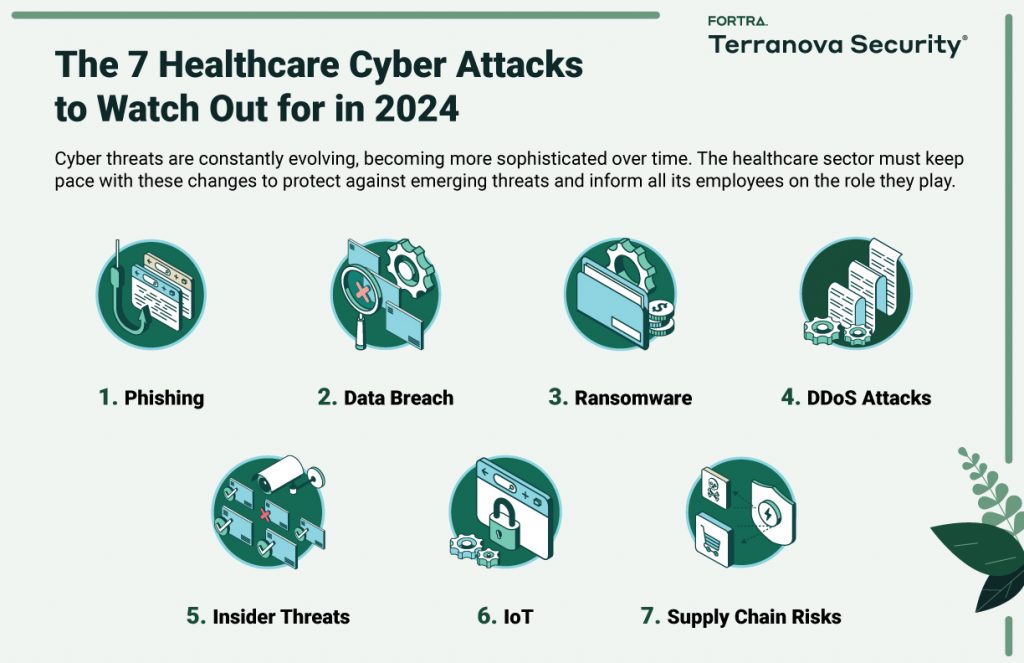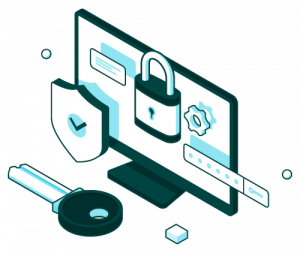While industries like banking and software can be devastated by cyber attacks, no other field is impacted by hackers like healthcare.
As an example, it’s hard to forget attacks like the ransomware that brought all 400 locations of Universal Health Services to a standstill for months in the United States. Healthcare facilities often can’t operate if they don’t have access to crucial information like surgery notes and patient history.
Hospitals and clinics hold an astonishing amount of profoundly sensitive patient data that it can spell disaster when hackers gain access to patient data.
Furthermore, as stated by Theo Zafirakos, Terranova Security’s CISO, “The healthcare sector is subject to stringent regulatory requirements like HIPAA (Health Insurance Portability and Accountability Act) in the United States. Failure to comply due to inadequate cybersecurity measures can result in substantial legal penalties and loss of reputation.”
Hackers thrive on this, knowing these reasons cause healthcare institutions to pay ransoms.
Let’s outline the seven most common and dangerous healthcare cyber attacks to prepare your users this 2024.
What are the top cybersecurity threats to healthcare in 2024?

Cyber threats are constantly evolving, becoming more sophisticated over time. The healthcare sector must keep pace with these changes to protect against emerging threats and inform all its employees of the role they play.
That starts with awareness of the common and more dangerous cyber attacks plaguing the healthcare industry. Here are seven of them.
1. Phishing
Hospitals and clinics are fast-paced environments with constant urgency looming over their workers. These workplaces are often the perfect place for phishing since some employees are bound to not verify properly before sending over the information in the heat of the moment.
Email phishing is the most common type of phishing affecting the healthcare industry. In this attack, hackers use advanced social engineering techniques to convince their victims to send them sensitive information. This information is later sold or used to commit identity theft.
One of the best cyber security tips is always to double-check the provenance of any email. It takes seconds to check the origin of an email, and spear-phishing attacks are usually relatively easy to detect since they’ll come from completely bogus addresses or similar ones but the wrong domain name.
2. Data Breach
Compared to other industries, the healthcare industry suffers a large amount of data breaches, experiencing an average of 1.76 breaches per day.
Despite strict requirements for protecting health records and patient information, such as HIPAA, most healthcare establishments struggle with implementing security controls. This allows hackers to threaten the safety of patients and their data.
Recent years have proven the cost of data breaches. The biggest breach in history by far is the Tricare data breach that occurred in September 2011, where electronic records of over 5 million patients were stolen.
To protect patients against data breaches, institutions must look into attack surface monitoring solutions. They must also be able to address their third-party vendor network, providing suppliers with awareness training so they, too, can make efforts to protect data loss.
3. Ransomware
The data kept by healthcare companies can potentially be some of the most sensitive information in anyone’s life. This simple fact makes healthcare institutions prime targets for ransomware attacks.
This type of attack revolves around a virus, often a trojan worm, that infects computers to encrypt all the data on the machine. Hackers then display a message on all infected computers, asking for a ransom to release the trapped information on the devices.
These viruses have become so complex that, usually, only the people who created them can remove them. Because of this, the best approach is to stop them before they start.
A phishing attack containing a malicious link or file almost always delivers these viruses. Remind your users never to click on a link or download a file from a source they don’t know.
Simply checking the URL to make sure it’s legitimate is a crucial practice. Malicious files of this nature also often use .exe or .vba extensions instead of typical work extensions such as .pdf or .xlsx.
4. DDoS Attacks
This attack involves millions of pings to a server, usually using emails, making it crash and rendering it useless as long as the attack continues. DDoS attacks are generally directed at government websites as a method of protest and are typically resolved quickly.
However, the same attack can have terrifying consequences if used against a mission-critical website-based tool in a hospital. An hour of interrupted computer service in healthcare situations can lead to disastrous results. Hackers usually request a ransom to stop the DDoS pings and free the attacked system.
In this case, the onus isn’t on your users but on IT departments to have the proper technological defenses against DDoS.
For example, having extra on-demand bandwidth to slow crashes and leveraging a CDN service to filter out the bad requests will often give you enough time to beat the attack as it happens. Several modern servers also have hardware protections against this type of attack.
5. Insider Threats
A significant risk in hospitals and clinics arises from insufficient employee awareness, which can lead to unintentional insider threats.
Employees may unknowingly facilitate data theft or the installation of malicious software like viruses and botnets on devices, which can compromise sensitive information or disrupt network operations.
To mitigate this, you can implement comprehensive training programs that educate staff about the importance of data security and the risks associated with data access and physical connections to systems.
Alongside this, establishing a strict hierarchy for data access and anonymizing patient information where possible can further protect against unintended breaches.
In addition, integrating Data Loss Prevention (DLP) measures can be a proactive approach. DLP tools can monitor and control data movements, alerting to any unusual activities that might indicate a security threat, often stemming from a lack of awareness among employees.
6. IoT
Internet of Things (IoT) refers to a network of interconnected devices that collect, exchange, and analyze data. They can range from health monitoring gadgets to more sophisticated surgical robots.
While IoT has revolutionized healthcare, it also opened the industry to significant cyber security risks, including ransomware, data breaches, DDoS attacks, and more.
To protect against IoT attacks, healthcare entities must keep their devices updated with the latest security patches and implement robust authentication protocols. Network segmentation can also help limit the spread of attacks across an IoT network.
7. Supply Chain Risks
When attackers want to breach an organization, they may target less secure elements in the supply chain, using them as an entry point into more secure healthcare systems.
Cyber attacks on the healthcare industry sometimes result from the negligence of their supply chain or third-party vendors. Especially with digital transformation underway, which popularized the use of the cloud for patient records, security threats are becoming more prominent.
According to a study, cloud security is a top security challenge in healthcare IT, with 61% of respondents suffering a data breach within a cloud system in 2022.
The most common breach via the supply chain comes from vulnerabilities in a vendor’s cyber security practices or employee awareness, which can be exploited to gain access to the healthcare provider’s network.
One of the ways healthcare industries can strengthen their supply chain and cloud security is by following basic cloud security hygiene. That includes understanding their cloud services and ensuring their third-party providers implement mature security programs.
Awareness Is Protection
The healthcare industry will always be a prime target for cyber attacks. Whether it’s for sensitive information or because the consequences of a hack are immense, hackers will always go out of their way to target facilities like hospitals and clinics.
Regularly informing your users of the various threats you face is key to prevention. Most people fall into these traps because of ignorance and these threats are easy to detect if you know what to look for.

Terranova Security can help strengthen your healthcare cyber defenses
Request a demo to learn more about our security awareness programs and third-party risk management.